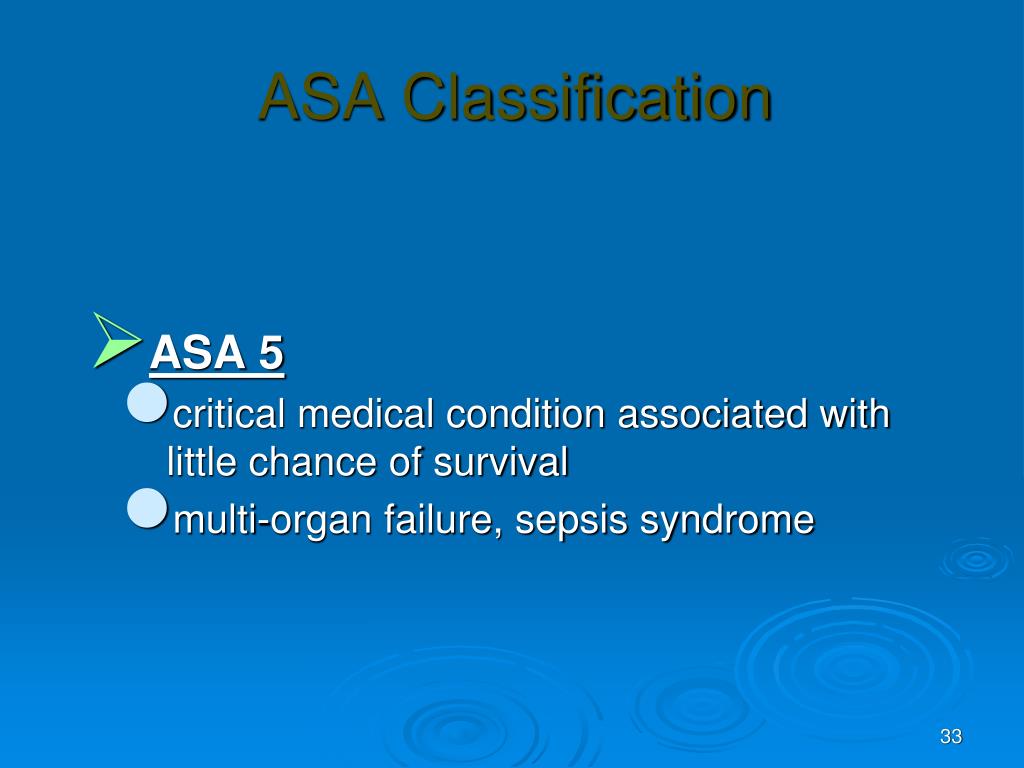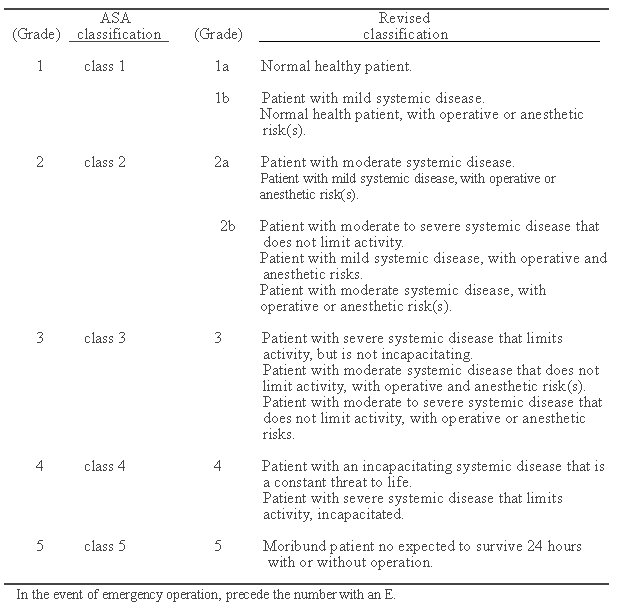

The use of the G modifier in this case reduced this inconsistency in classification. Compared to the non-obstetric and obstetric cases 5 and 6, case number 4 had the greatest inconsistency in ASA classification.

Sixty-eight of them were incomplete and hence not included in the analysis. Results: To date, a total of 464 questionnaires were returned (54%). Identical obstetrical scenarios were presented, but the participants were directed to assign an ASA classification using the modifier "G". Next, we proposed adding a "G" (for gravida) - similar to the addition of "E" for emergency cases - to indicate the patient who is pregnant. Case 1: A 34 y/o male with gastro-esophageal reflux disease presenting for elective laparoscopic hernia repair Case 2: A healthy 24 y/o female who will undergo left breast biopsy Case 3: A healthy 19 y/o male with acute appendicitis presenting for emergent appendectomy Case 4: A healthy 24 y/o G1P0 in active labor, requesting labor epidural analgesia Case 5: a 22 y/o G1P0 in active labor, developing early signs of pre-eclampsia Case 6: 38 y/o G3P2 with compensated CHF presenting for cesarean section for breech presentation. The participants were presented with the following six cases and asked to assign an ASA physical Status Classification. Methods: Eight hundred and fifty six questionnaires were sent to the Members of the Society of Obstetrical Anesthesia and Perinatology. We wanted to investigate the consistency of ASA classification in pregnant women and the use of a new modifier that would potentially improve the current classification. The current classification does not capture this difference. Its use in the obstetric population brings special controversy: the physiologic changes of pregnancy make pregnant women different from non-pregnant women however, pregnancy is not considered a disease. The inconsistency in ratings using this classification in surgical patients has already been shown 3,4. The ASA Physical Status Classification was then modified into five categories in 1961 2 and remains in use today with some changes.

Introduction: In 1941, the American Society of Anesthesiologists developed a six-category classification for patients requiring anesthesia and surgery 1. Muir, M.D., F.R.C.P.C.ĭepartment of Anesthesiology, Duke University Medical Center, Durham, North Carolina. Shultz, M.D., Tong Joo Gan, M.D., Holly A. ASA Physical Status Classification in Pregnant PatientsĪtilio Barbeito, M.D., John R.


 0 kommentar(er)
0 kommentar(er)
